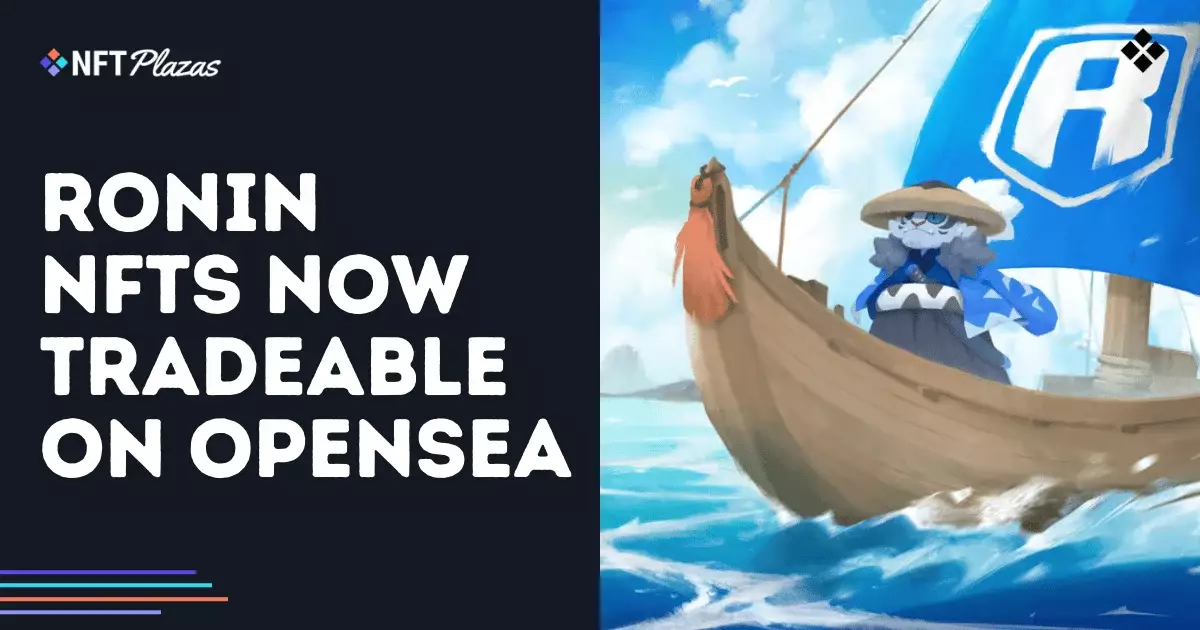There’s an undeniable excitement buzzing through the NFT community with the recent update that allows NFTs minted on the Ronin blockchain to be listed and traded on OpenSea. This is not just a procedural update; it symbolizes a critical shift towards integrating niche blockchain ecosystems with mainstream NFT marketplaces. Sky Mavis, the developer behind Ronin, has taken a significant leap by introducing this feature, allowing NFT enthusiasts to buy, sell, and create digital assets using the highly popular OpenSea platform. It’s a move that positions Ronin on the map alongside Ethereum and Solana, enhancing its reputation within the blockchain ecosystem.
Accessibility: A Double-Edged Sword?
The launch of OpenSea Studio, a no-code platform for NFT creation, is a commendable effort towards democratizing access and fostering creativity within the community. However, the concern here is that making NFT creation too easily accessible could dilute the quality of art and innovation within the space. With so many users entering the market without adequate knowledge or commitments to quality, will we see a flood of low-effort projects saturating the marketplace? The balance between accessibility and quality is delicate and warrants careful consideration from both creators and platforms.
Tokenomics and Long-term Stability
The integration aligns with an innovative economic model, where 8% of OpenSea’s platform fees from Ronin-based transactions will direct revenue to the Ronin Treasury. This is a strategic masterstroke in terms of creating a sustainable financial backbone for the Ronin network. However, one must ponder: will this revenue model truly support long-term growth, or could it incentivize short-term profiteering? The decisions made by Sky Mavis and the framework they put in place will ultimately dictate whether this integration bolsters Ronin’s ecosystem or leads to unsustainable growth patterns fueled by speculative purchases.
The Royalty Conundrum: Fairness or Ambiguity?
While the integration has been celebrated, it also raises questions about the royalty enforcement policies linked to different token standards. OpenSea will honor royalties for certain token standards like ERC-721C and ERC-1155C but not for others such as ERC-721 and ERC-1155. This presents a level of confusion and inconsistency that can disorient creators and collectors alike. If creators cannot guarantee their earnings across platforms, it diminishes the incentive to create genuinely unique art pieces. Sky Mavis’s promise to reconcile these discrepancies is commendable, but real-world implementation will determine if these plans can yield a cohesive marketplace experience.
Commemorative Tokens: A Marketing Masterclass?
The launch of commemorative NFTs, Jin and Ronke, raises eyebrows for more reasons than just their availability. They serve a dual purpose: rewarding early adopters while also functioning as effective marketing tools to draw new users into the Ronin ecosystem. However, some might argue that such limited-time offers can create a worrying precedent where marketing gimmicks outweigh the cultural value of digital art. Is the community’s focus shifting from the appreciation of art to mere opportunistic hunting for tokens? This question lingers as we watch the marketplace evolve.
Through these multifaceted dynamics, the Ronin blockchain’s integration with OpenSea presents a paradigm shift that provokes spirited discussion about quality versus accessibility, fairness, and long-term sustainability in the NFT space. The coming months will be crucial as we witness the response from the community to these exciting yet complex developments.














Leave a Reply